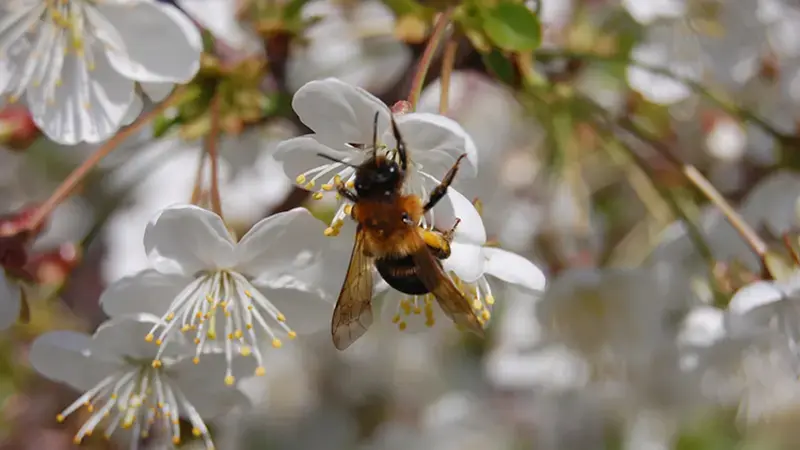Bringing Back the Buzz: A 'Blueprint' for Smallholders

As countries across the dry areas contend with rising temperatures and increasing water scarcity, farmers need rapid solutions to maintain food production. Are there any practical measures for farmers?
Pollinators, often overlooked in food security strategy, offer one such solution -a self-sustainable and win-win strategy for farmers and agroecosystems. Studies have shown that wild pollinators - a term that incorporates a wide range of creatures including wild bees, bumblebees, flies, butterflies, midges, wasps, and even birds and bats - are a proven means of increasing productivity of many crops, both in terms of quality and quantity. They increase the harvest of 87 out of 115 most important global food crops, generating over US$180 billion yearly (estimate as of 2005).
The declining diversity of pollinators is a serious and growing global concern, yet not quite on the agenda for taking measures to protect these valuable resources.
What can be done to remedy this situation? ICARDA research developed proactive Farming with Alternative Pollinators (FAP), a cost-effective and practical solution to safeguarding pollinators, which make farming the key agent to sustain pollinator diversity.
In a first-of-its kind scientific implementation, scientists introduced FAP on farmers' plots as part of building community resilience in Uzbekistan - an area predicted to be one of the worst affected by climate change. The project used control experiments to quantify impacts from habitat enhancement and developed a ‘blueprint’ farmers can employ to enhance pollination services at very low costs.
The approach was experimented with farmers growing cucumbers. To attract diverse pollinators, 25% of each plot was used to grow a variety of crops such as coriander, sunflower and pumpkin, along with locally made nesting support, while 75% of the plot was used for main crop of cucumbers. The approach led to an increase in net income by US$3,653 per hectare from better quality (market price) and quantity of cucumbers, and added revenue from the habitat strip. In another experiment, FAP doubled the harvest of sour cherry in the first year.
"Growing 10-12 crops total can provide a 'buffet' for pollinators to feed on and gain nectar and pollen for three seasons", says Stefanie Christmann, environmental governance expert at ICARDA, leading the FAP project (see FAP guide for smallholders).
Based on the results, FAP incorporated into climate change adaptation strategies could bring significant benefit, particularly in developing countries, where insect-pollinated agriculture accounts for a greater share of the national GDP.
(Reference: Christmann, S., Aw-Hassan A.A., 2012. Farming with Alternative Pollinators (FAP) - an overlooked win-win-strategy for climate change adaptation. In: Agriculture, Ecosystems and Environment 161, 161-164.)
Supported by: BMUB and GIZ (Germany)
